Wilson Dynapower Carbon Driver
Wilson Golf’s 2023 Dynapower lineup consists of two attractively priced, premium-level drivers, the Dynapower Carbon and Dynapower Titanium. While the Titanium will likely match the needs of a broader group of consumers, the Carbon has captured the most interest. Wilson’s use of advanced technologies like Dynapower AI and composite materials should ensure the Carbon is able to compete with many of 2023’s premier drivers.

Quick Take
The Dynapower Carbon has all the trappings of a modern, technologically advanced driver. The low-forward CG makes it best suited for better players, especially those with plenty of speed that are looking for lower spin off the tee.
Technology
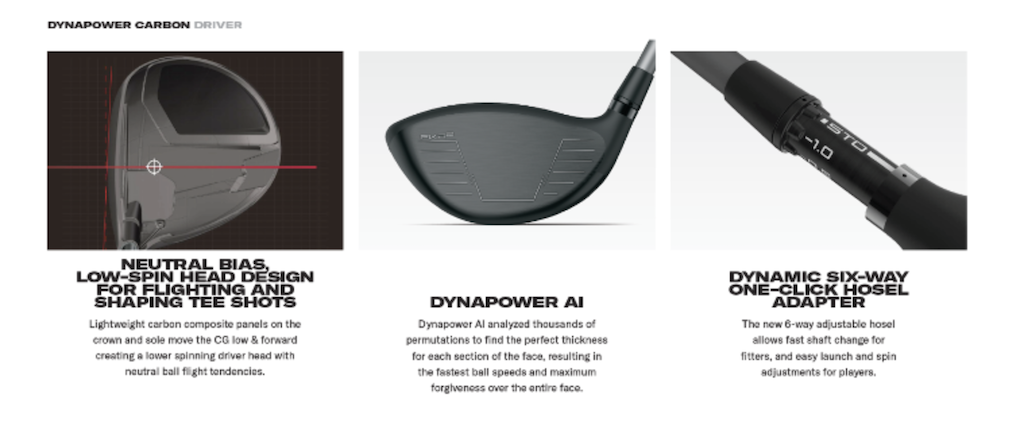
The Carbon’s most notable technology piece is in its name. The composite (carbon) crown and toe-section of the sole gave Wilson a great deal of flexibility in where they were able to distribute weight in the club head. In the Carbon’s case, they chose to manipulate the center-of-gravity (CG) low and forward, not far behind the center of face. This placement encourages a more penetrating trajectory, lower spin, and a neutral ball flight. While those are all great things, they do come at a price when it comes to forgiveness and launch angle. Players that struggle with the right miss, with finding the center of the face, or those that don’t produce sufficient ball speed may find that they are better off with a driver that has a lower CG. However, there are many players that can benefit greatly from this technology, and they should be able to maximize their distance potential with the Dynapower Carbon.
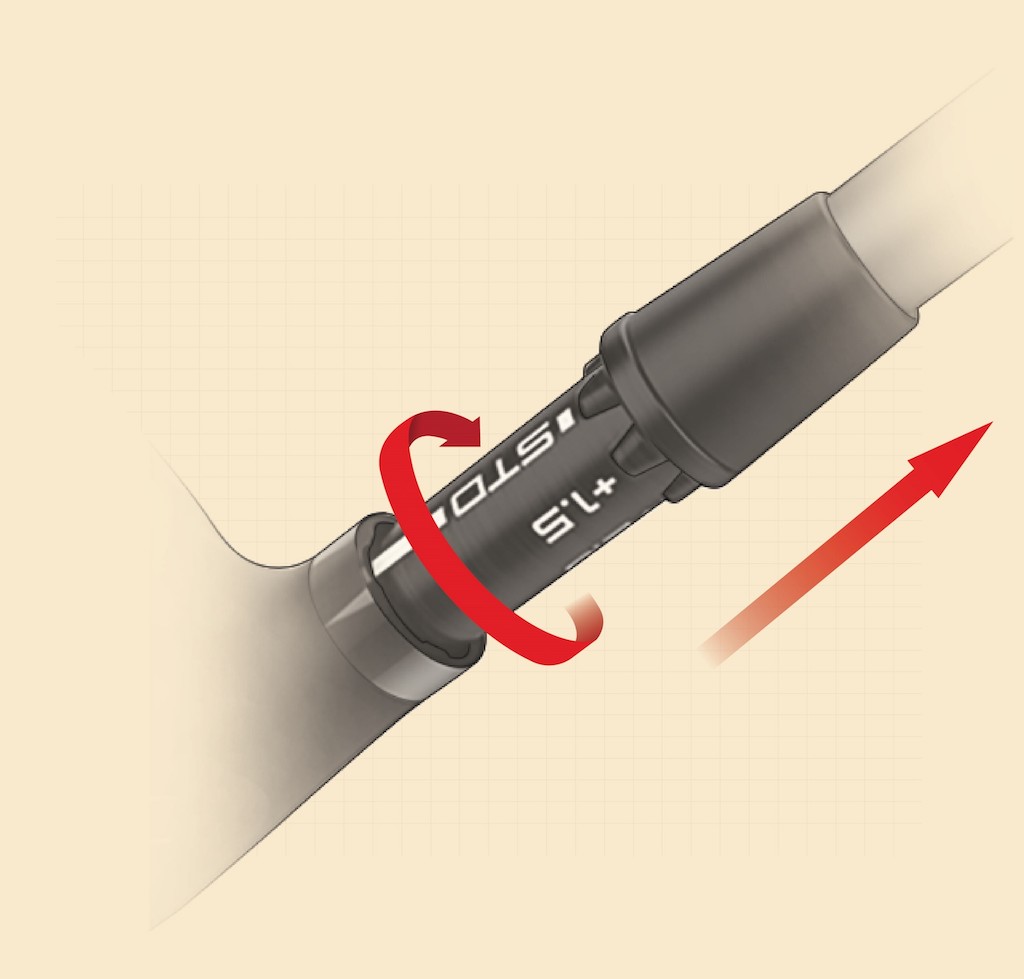
Dynapower Carbon possesses a new, six-position adjustable hosel that allows for loft adjustments ranging from -1 to +2 degrees. In addition, these adjustments will impact face angle, resulting in up to a 750rpm difference in left/right spin. Fitting carts will be vital for consumers to find their ideal starting loft, as lofting up or down too much could seriously impact directional dispersion.

Wilson utilized Dynapower AI when deciding how to implement their new PKR2 dynamic face thickness. This is (thankfully) becoming a common design-tactic of club manufactures as they attempt to make off-center impacts less penal. While the Carbon isn’t designed or marketed as an overly-forgiving driver, this added feature should help players retain as much ball speed as possible when they miss the center of the face.
Aesthetics
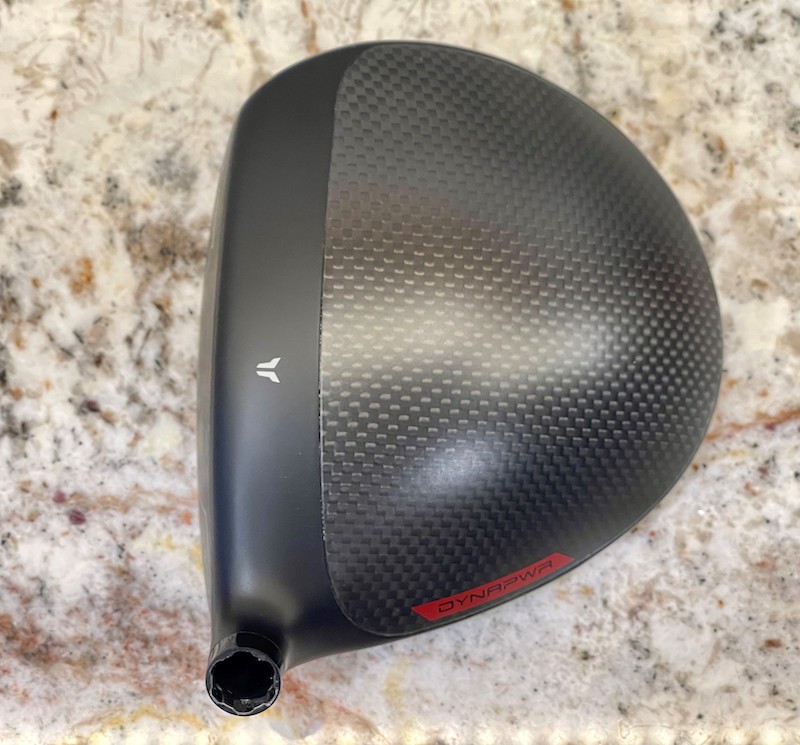
In our preview article on the Dynapower Carbon, we relied on Wilson’s stock imagery to get a sense of how the driver looked. For the most part, our feelings haven’t changed much after seeing the club in hand. We described seeing flashes of modernity blended with a somewhat dated overall look, which remains a fair assessment. The carbon fiber weave on the crown contrasts with the extended, dark top line at address. However, when the light hits it from a slightly different angle, the contrast softens a bit and makes the head very appealing to the eye. We also mentioned that the sole design was somewhat busy, and it’s hard to argue that point with its various logos and fonts. On closer inspection, the carbon weave toe section is incredibly well done, though it seems like the slate gray midsection detracts a bit from the overall look.
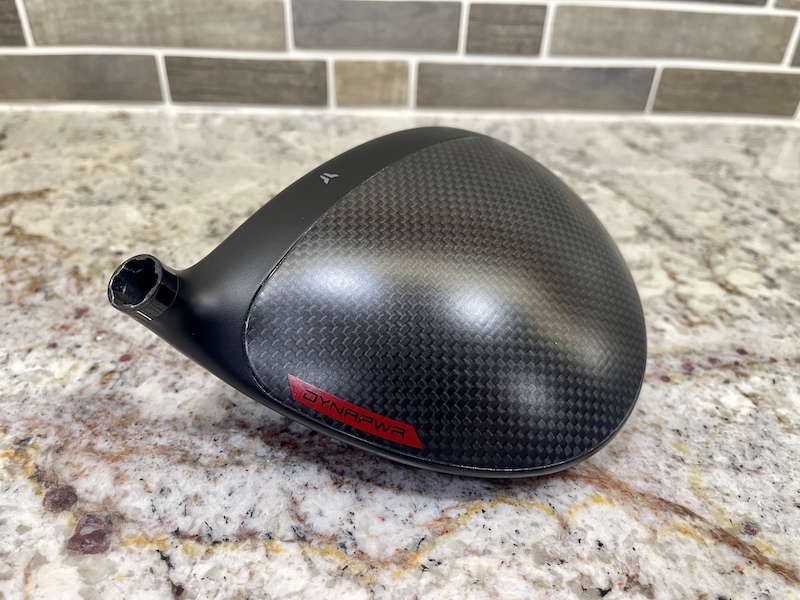
Most importantly, however, The Dynapower Carbon does manage to convey the impression that it is a premium, high end driver in-hand. The transitions from the gray Lamkin Crossline 360 to the blue Ventus shaft to the head are nicely executed and should give prospective consumers confidence that this is a well-designed, high-performance club.
In its stock, neutral hosel position, the Carbon sits square to slightly flared open at the toe, which should make it appealing to many better players’ eyes. Making loft adjustments does change the face angle open or closed, depending on whether one is adding or subtracting loft. This is similar to how most adjustable drivers function, and while these changes aren’t extreme, those players that are sensitive to face-angle will want to keep this in mind. Luckily, the Carbon is available in 9, 10.5, and 12-degree heads, so finding a loft and face-angle combination that work should be easy.
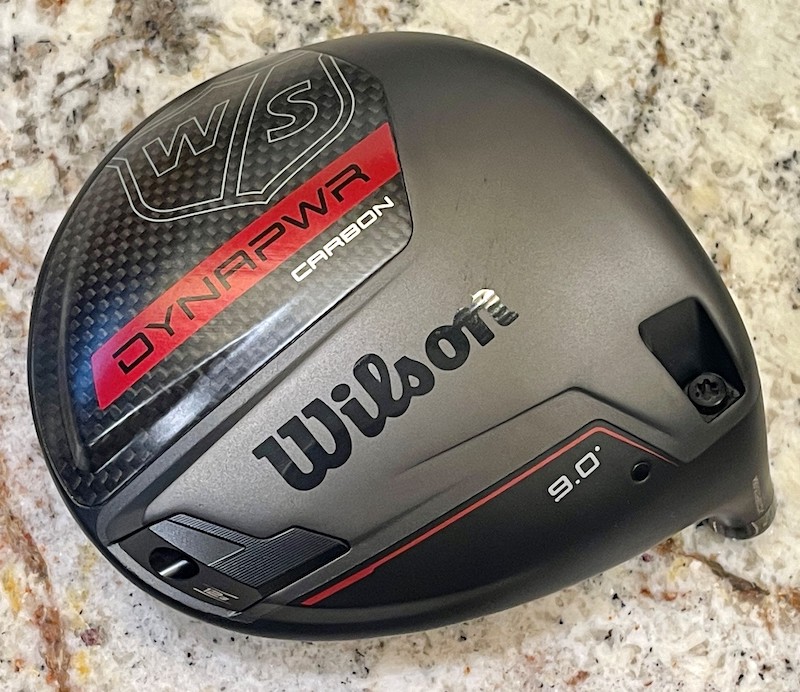
The Carbon produces a firm and powerful sensation at impact, and the sound is slightly dulled by the construction of the head. While some modern carbon driver heads manage to almost feel squishy at impact, the Dynapower definitely does not, but the sound doesn’t approach anything we’d consider extreme. While matching the preferences of every consumer is an impossibility, Wilson has managed to build a driver that has a generally pleasing sound that should work for most people.
Performance
We tested the Dynapower Carbon driver in 9 degrees of loft with the stock 65g Mitsubishi Ventus Blue shaft.
It quickly became evident how well the Dynapower Carbon could perform for high swing-speed players. Ball speeds on center impacts were quite high and were better than expected on misses laterally across the face. Those looking to control spin and trajectory will enjoy the flat, boring trajectory created from slightly lower launch angles and very manageable spin rate. Unlike a driver with a very low and rearward center of gravity, the Dynapower Titanium for example, the Carbon isn’t designed to encourage extremely high launch angles and testing backed that up. Compared to a competitor’s driver in the game-improvement category, the Carbon consistently launched two degrees lower on center impacts. Though it’s cliché, it would be difficult to describe the trajectory as anything other than “penetrating”. Fitting will be very important here. Lower swing speed players will likely need to explore higher lofted heads to make sure they are able to maximize carry distance. As we would expect, launch angles were lowest and spin was highest with low-face impacts, though spin rates remained quite manageable. The opposite was true with impacts slightly above center, with a notable increase in launch and decrease in spin observed.
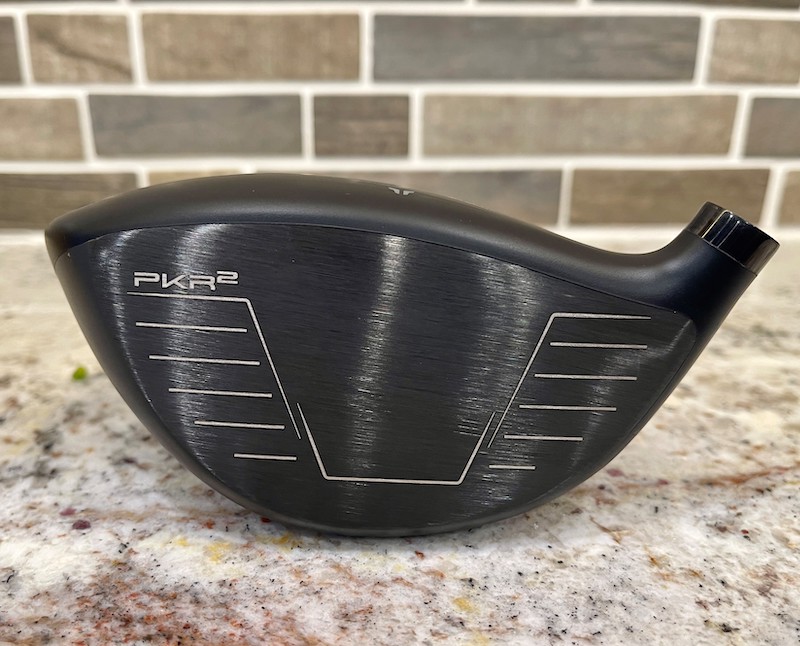
Before discussing forgiveness, it’s worth mentioning again that the Dynapower Carbon isn’t designed for players that miss the center often. The low, forward center-of-gravity promotes the aforementioned ball speed and trajectory benefits, but it also reduces stability with off-center impacts. Twisting of the head, especially on toe impacts, was evident visually and in the hands. While the PKR2 face did surprisingly well at maintaining ball speed and spin away from the center of the face, the reduction in MOI resulted in some penal directional misses. This illustrates the importance of fitting, as players that miss high or low more often shouldn’t see as much negative impact as those that live on the heel or toe.
Details
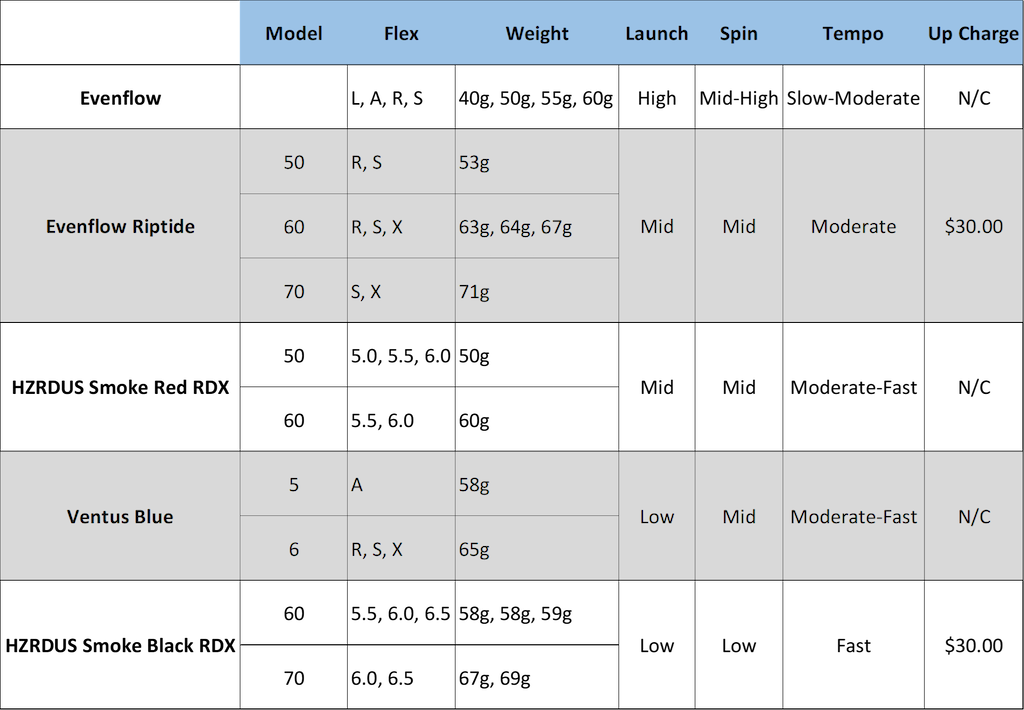
Dyanpower Carbon will be offered with five stock shaft options and a gray Lamkin Crossline 360 grip. In addition, fitting carts will have 5g, 9g, 12g, 16g and 20g weights available to dial in both swing weight and launch conditions.
The Dynapower Carbon is available in 9, 10.5, and 12-degree heads and the price is $499.



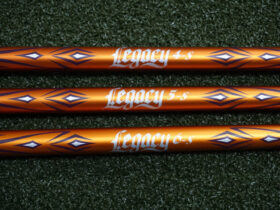

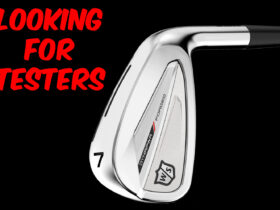






Is the low spin costing you in accuracy.
Both sites were blown away with the carbon model. I may just have to go and hit these.
More so distance.
I am happy for Wilson. They did something right……and meant to.
Anything that low spin would be a killer when you miss. Need some major speed and launch to get this one out there.
Was told my a Wilson Staffer there doing the fittings that they were told the magic numbers were 17/1700.
Was fit into a 10.5* with the Ventus Blue 6S. Nice sounding driver.
Fitter at the PGATSS told me he bought one – Never got the distances like he did with this Driver
I have a 1/2 Wilson Driver Fitting on Sunday.
Let’s see if I can get better numbers with V1x.
Yeah just saw that. The face has an issue but as a long drive driver it seems to go a long ways. He does say non centered strikes are pretty penalized.
Very SLDR like.
I couldn’t hit that thing for the life of me.
Perfect description.
Maybe it can be part of your upcoming driver fitting
Impossible to find around here.
It’s definitely better suited for the good swings. The good ones are really good though!
Dont miss it toe side though. Probably the most punishing driver I have hit on the toe this year.
You have that right. If you’re a toe-hooker, which I am, it’s just not going to work.
If I had based my fitting off of initial impressions, I was prepared to walk out with it that day. 275 carry, It had the highest ball speeds and the lowest spin, felt great, sounded superb. But, the wheels fell off. One drive barely cracked 200 yards and spun just shy of 6000 rpms.
The G430LST was super punishing there (as well as low) and this one along with a couple of others. But this was by far the hardest I tested in that area.
I finally was able to get out and test the carbon last week. Man this thing is impressive! Easy to hit, sounds incredible and was keeping up on ball speed with a tsr3. I see a lot of comments about low spin, but it was spinning the same as tsr3. 12* and 2400 spin was hitting a perfect window on a 10.5* head. Was not a fitting, so curious to see what a proper fitted shaft would provide, but color me impressed to say the least. Damn good looking and performing driver Wilson has at the moment.
It was more forgiving than my ltdx ls off toe strikes, which I really enjoyed.
Anyone else get more time with it?
That’s interesting on the toe side strikes. I was so far on the opposite side comparing Aerojet to it. I lost a ton of speed on the monitor towards the toe. Handled the heel pretty well though.
Yeah, the ltdx ls is not very friendly on high toe strikes. Problem for me is that is my miss. I always tend to put hot melt in my drivers toe side. Mainly need the added weight as I started playing driver at tour length. A little weight in the toe helps for sure.
Honestly, 2 things that impressed me the most with dynapower was the sound and ball speed. It sounds and feels powerful and was neck and neck with what I feel was the driver of the year the tsr3.
It definitely sounds good. And speed is decent, which makes sense considering where the weight is placed moving forward. I just didnt find it forgiving at all, laterally. Glad its working for you though.